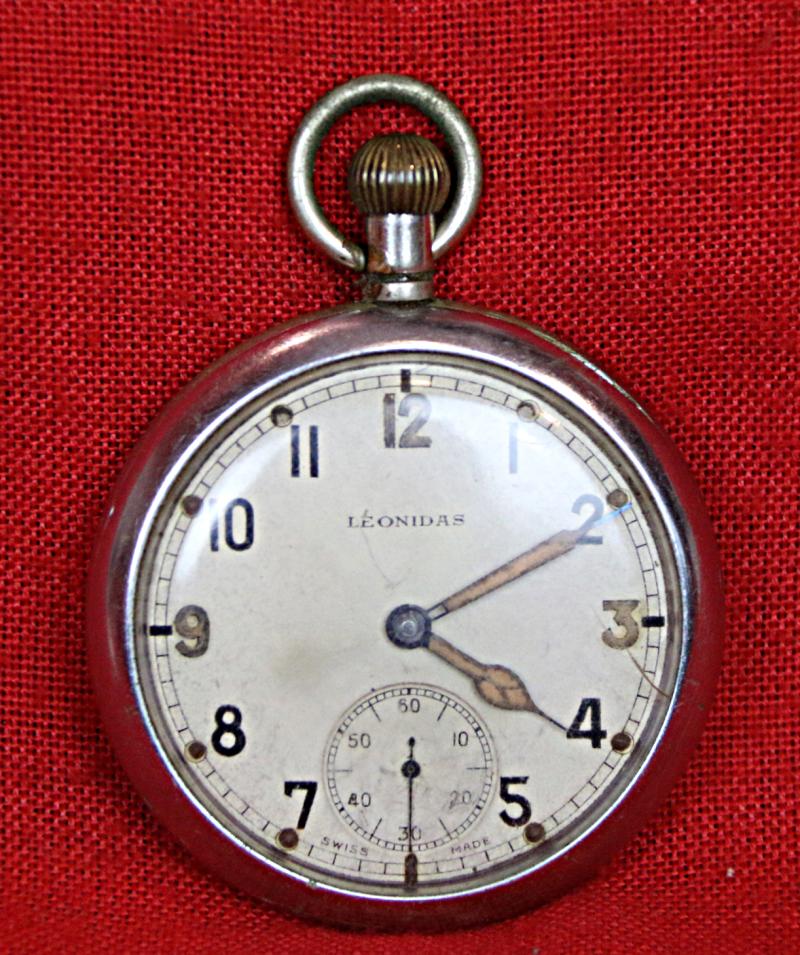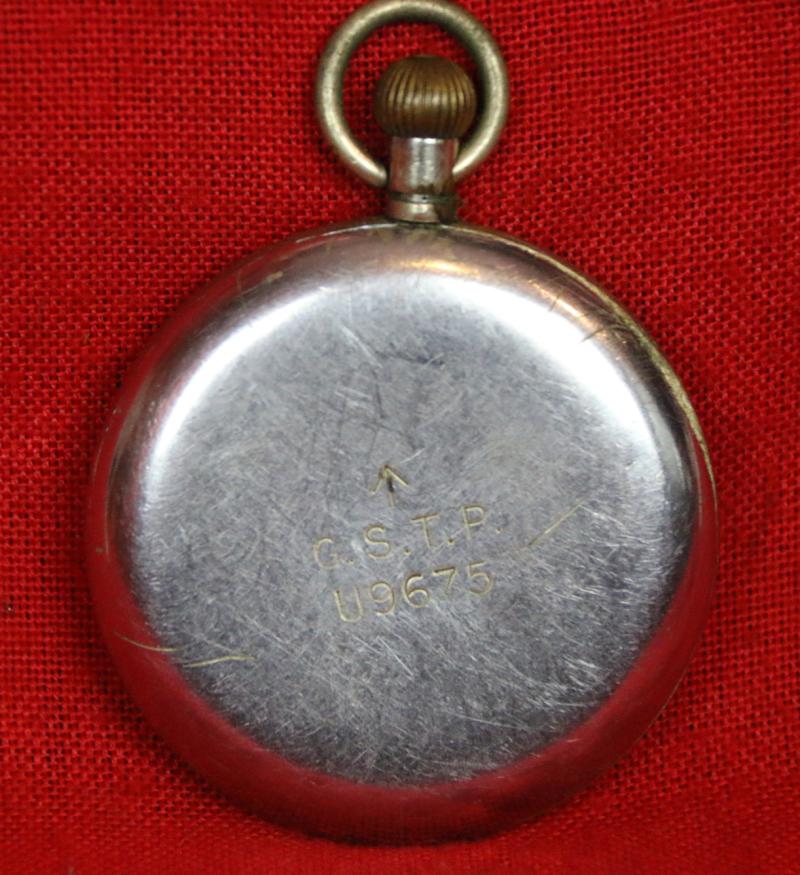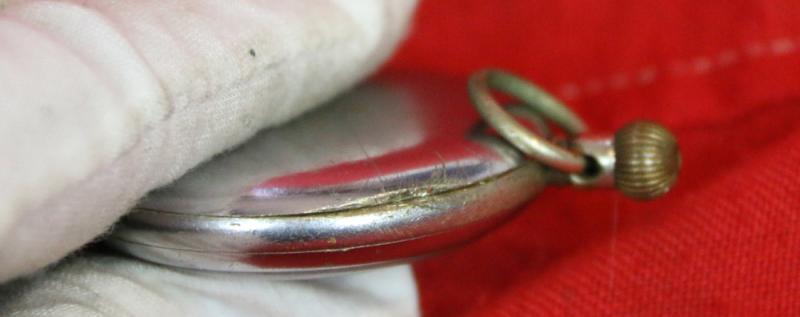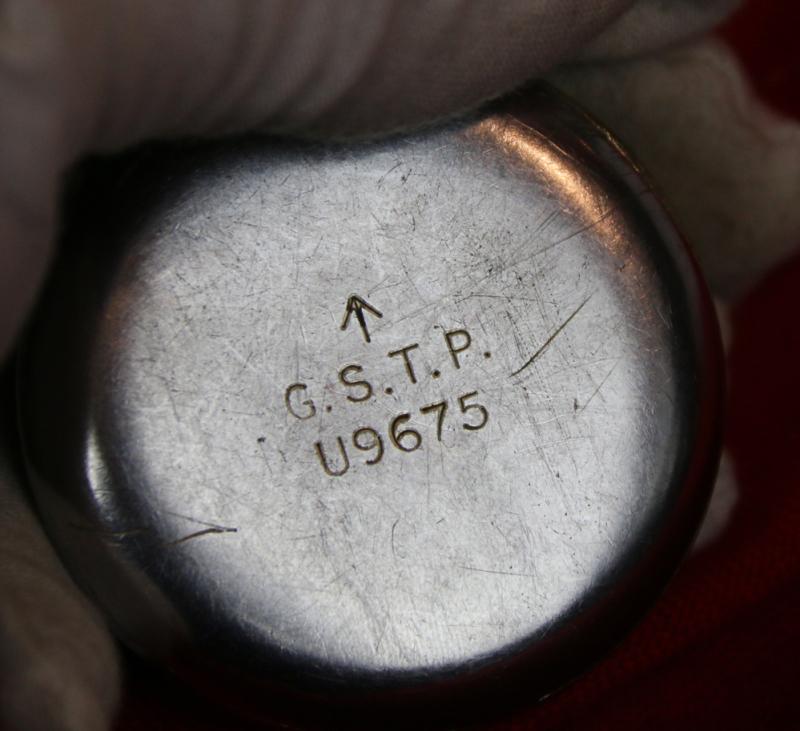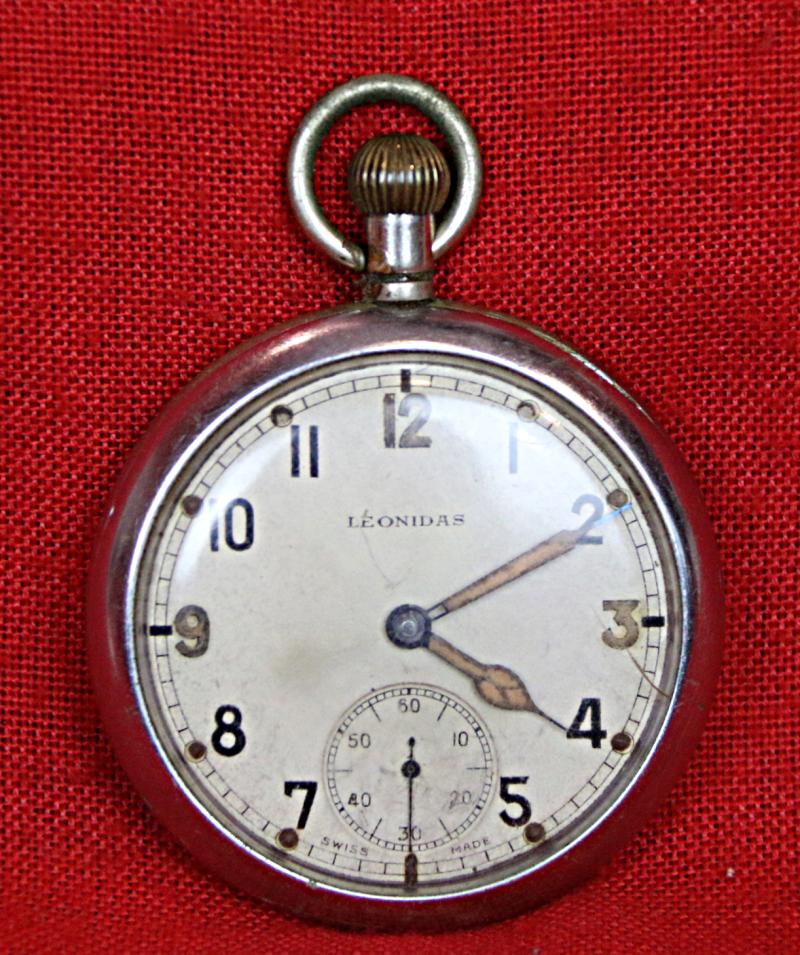WW2, British, Military GSTP {General Service Timepiece}Top Winding Pocket Watch, Swiss Made by Leonidas Named In Honour of King Leonidas of Sparta, The Swiss Watch Makers That Later Became Tag Heuer After The War. In Working Order
GSTP watches were made by numerous manufacturers but were all of similar design, which was more than likely specified by the British authorities. The British armed forces were slow to embrace change and consequently, when war broke out again in 1939 they were ill-prepared with insufficient timepieces for the servicemen and women. Pocket watches were hurriedly purchased from various Swiss manufacturers in anticipation of shortages.
Most of these watches were regarded as 'General Service' and classified as Temporary Patterns'. These pocket watches became the timekeeping workhorses of the early part of the war whilst more appropriate wristwatches were being commissioned.
Established in Switzerland in 1841 by Julien Bourquin, the Leonidas Company took its name from the renowned king of Sparta. The company distinguished itself by specializing in the production of high-quality stopwatches, chronographs, and multifunction watches designed for use in aircraft and car instrument panels. In 1964, a merger with Heuer resulted in the formation of Heuer-Leonidas. Eventually, the brand was phased out when the company transformed into TAG Heuer in 1985.
By July 1940, then, it had become clear that Britain's dependence on Swiss
firms was not likely to disappear. The establishment of alternative facilities might
be sanctioned with little ado, but no production could begin before the arrival of
specialized machine tools from Switzerland or, in many cases, the skilled Swiss
technicians to operate them. ' I do not think it is appreciated ', lamented one
MAP official, that we are faced with the problem of creating here in four months, an industry which has
taken a century to build up in Switzerland.
Given the unhealthy state of Britain's addiction to Swiss manufactures, it was fortunate that those British officials responsible for the matter had the flair, imagination, and wit to match the occasion. In the first week of August, the ministry of supply inaugurated a 'Swiss cloaks scheme'. The hitherto haphazard ordering of Swiss products was replaced by a centralized system under direct government
control. Individual firms were forbidden from communicating with their Swiss suppliers, but instead worked through the ministry of supply, which would arrange for the legation in Berne to pay for the goods, freight charges, and other incidentals. When the goods arrived in the United Kingdom they were either sent to the consignee, who was billed accordingly, or distributed to the industries
concerned through selected agents, who worked on a commission basis
The game of cat and mouse between German customs officials and British diplomats in Switzerland began in earnest in August 1940 and continued until Allied forces reached the Swiss frontier fifty months later. The first twelve months of the contest was characterized by progressive German efforts to tighten their grip over Swiss foreign trade. During this period, some ' legitimate ' export opportunities, which circumvented German customs controls, remained open. Naturally,
these avenues suited some items and not others. The principal casualty was the admiralty's Oerlikon guns, 1,000 of which remained stranded in the factory awaiting delivery in mid-July 1940.
Code: 25857
295.00 GBP

